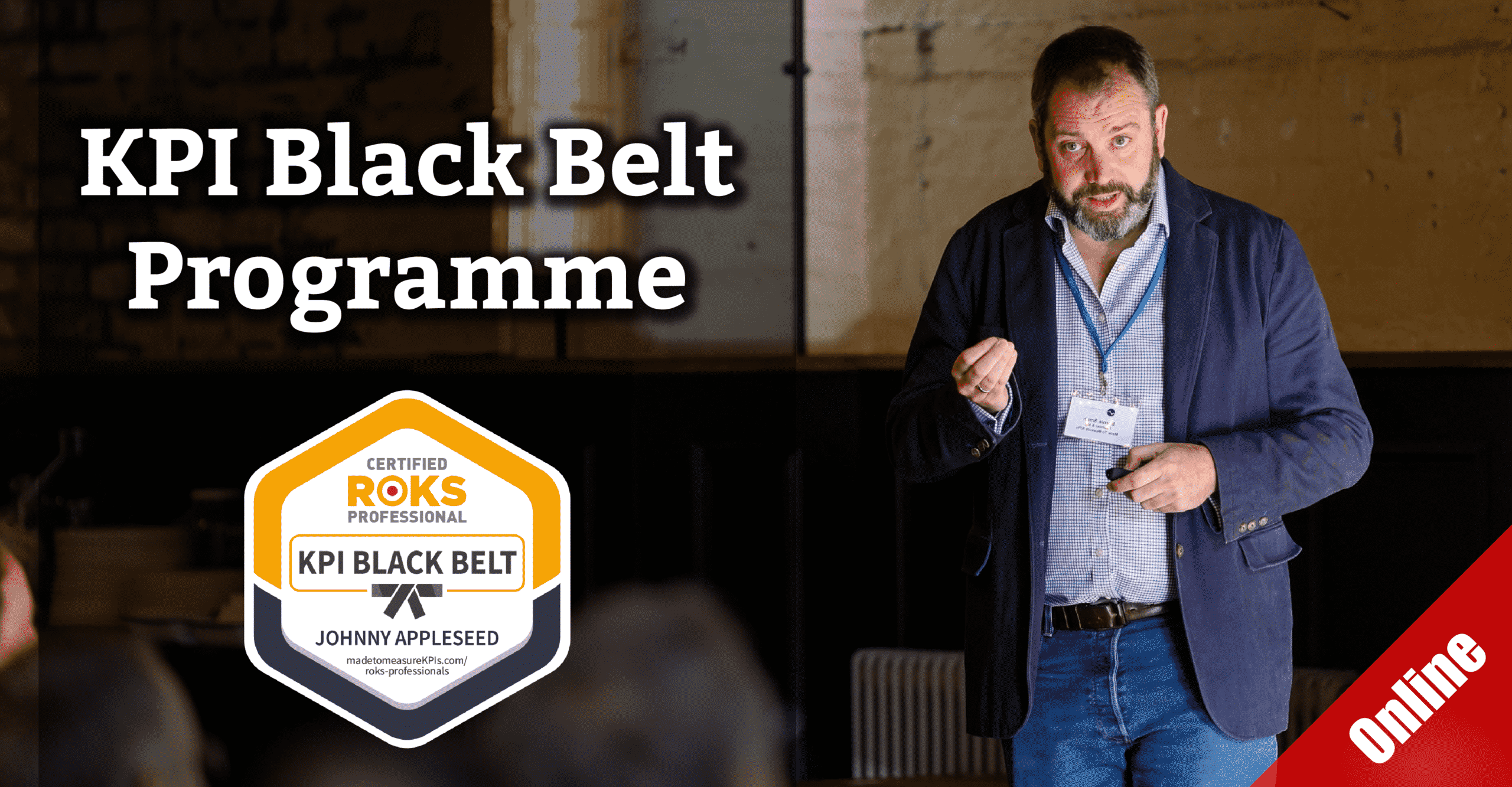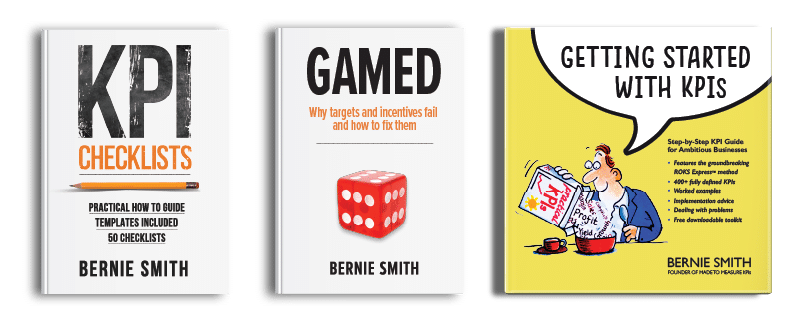Are Your KPIs Helping or Hurting? The Critical Difference Between Measuring Performance and Judging People

Key Performance Indicators (KPIs). Just hearing the term can evoke a range of emotions in the workplace. For some, they represent clarity, direction, and a path to improvement. For many others, however, they are instruments of anxiety, distrust, and even perceived punishment.
This stark difference in perception often boils down to one fundamental issue: are your KPIs being used to measure performance for the purpose of learning and improvement, or are they being used to judge people?
Let's look into the significant dangers of using performance measures to assess individuals and teams, and crucially, and how organisations can shift towards a healthier, more effective approach that drives true performance improvement.
The Risky Path: Using Measures to Judge People
Using performance measures to judge or assess how individuals or teams are performing is identified as a "bad habit" in the context of performance measurement. It is a common practice, but common does not mean good practice. The consequences of this approach are overwhelmingly negative and can sabotage the very goal of improving performance.
One of the most significant dangers is that it breeds fear. When people believe that measures are primarily used for evaluation, reward, or punishment, they become fearful of what the data might reveal. This fear creates a climate of defensiveness and can lead to widespread dishonesty about data. People may make excuses, fudge the figures, or sweep problems under the rug to protect themselves from perceived negative consequences.
Put bluntly, "Whenever there is fear, you will get the wrong figures".
This environment of fear and dishonesty undermines trust, openness, and collaboration. Instead of working together to understand performance challenges and find solutions, individuals or teams may focus on making their own numbers look good, even if overall organisational performance suffers. The measure itself becomes the focus, rather than the broader, more important outcomes it is supposed to represent. This is the "dark side of measurement".
Using measures to judge people does not encourage true performance improvement. Managers are encouraged to coach and facilitate people's performance, but measuring it directly, especially for rewards or punishment, can cause fear and turn employees' work into something measured rather than creative or self-directed. This outdated method of using money as a motivator is less effective than intrinsic motivation derived from fulfilling a purpose.
A broken performance measurement process where measures are used judgmentally can lead to significant waste. Performance review meetings might devolve into arguments about data integrity or measure relevance, delaying and derailing actual decisions about how to improve. When people feel measures are solely used as "rods to flog their backs," they resist engagement and collaboration. Efforts to measure performance will be resisted or met with cynicism if employees feel they are just selling their hours rather than being responsible for the organisation's results.
Put simply, when performance measures are tied to individual judgment and consequence, a defensive culture emerges where people avoid accountability, hide bad news, and focus only on positive results. This directly hinders the ability to learn, adapt, and truly improve performance.
The True Purpose: Measures as Tools for Learning and Improvement
If using KPIs to judge people is a bad habit that causes significant problems, how should performance measures be used?
Performance measurement is a process that should be designed to support organisational renewal.
It is feedback process, not an assessment process. Effective performance measures should be key to doing business successfully, helping organisations understand where they are, where they're trying to go, and highlighting obstacles along the way.
The true purpose of measurement is to provide objective evidence of the degree to which a performance result is occurring over time. Measures should keep us focused on what matters most. They should inform people and motivate them to improve performance. Effective measures help us know what current performance actually is, understand why it is at that level, and know where performance should or could be, along with what needs to change to get there.
Instead of being used to judge people, performance measures should be seen as tools in people's hands, not rods for their backs. They are feedback about organisational processes and results, not about individuals. This perspective is crucial for establishing a strong performance culture where people don't fear measurement and use it collaboratively to improve mission-critical results.
Measurement should be associated with learning more about what works and what doesn't, providing valuable feedback that keeps us on the right track and supports continuous improvement of business success. Measures should help us execute strategic initiatives, test whether they are working, make adjustments as the world changes, and learn where the true leverage points for improvement lie. They help speed up the identification of patterns in complex organisational systems, allowing for constant improvement.
In a high-performance culture, people appreciate that performance measurement is, in its essence, feedback – a necessary process for any system to flourish. People should feel curiosity, pride, confidence, anticipation, excitement, and empowerment from measuring performance results that matter. The most useful conversations teams can have are about the performance of their processes, identifying constraints, and testing high-leverage points to remove those constraints. This is about working on the business, not just in it.
The Solution: Fixing the Broken Process and Building a Culture of Learning
Given the significant problems caused by using measures to judge, how can organisations shift to using them as tools for learning and improvement? The sources indicate that this requires fixing the underlying "broken performance measurement process". This isn't a quick fix; it involves challenging deeply ingrained "bad habits" and changing mindsets.
One ready-to-use solution is the ROKS approach (Results Orientated KPI System). ROKS was specifically designed to directly tackle the most common struggles people have with performance measurement, including the issue of using measures to judge. It provides a structured, seven-step process for improving or redesigning performance measurement processes.
A core principle woven throughout ROKS is the emphasis on building buy-in and engaging people. Buy-in isn't achieved by simply consulting people or getting their sign-off; it comes from their active, hands-on involvement in choosing and designing the measures that relate to them. The ROKS method teaches people how to design measures themselves, fostering a sense of ownership that is more valuable than the sophistication of the measures alone. ROKS explicitly advises against measuring people; instead, it promotes measuring process performance collaboratively, as most constraints lie within processes, not individuals.
The shift from a judgmental approach to a learning approach involves several key actions:
- Redefine the Purpose: Leaders and teams must consciously shift the mindset from using measures for judgment or assessment to using them as feedback loops for learning, discovery, correction, and adjustment.
- Focus on Processes and Results, Not People: Make it clear that measures are providing feedback on how well processes are working and whether desired results are being achieved. Blame should be removed from the equation.
- Involve Stakeholders: Actively involve those who will be impacted by or contribute to the measures in the selection, design, and implementation process. This builds ownership and makes measurement a natural part of work. Techniques like a KPI Tree workshops and KPI Tree Roadshow can facilitate this broad engagement.
- Ensure Measure Meaningfulness and Clarity: Measures must be clearly defined to avoid ambiguity and ensure consistency in calculation and interpretation across the organisation. Vague goals or measures lead to confusion and wasted effort.
- Develop Data Literacy and Interpretation Skills: Teach people how to interpret data correctly, distinguishing real signals of change from random noise. Using appropriate charting methods, such as XmR SmartCharts, is essential for valid interpretation and avoiding reacting to trends that aren't really there.
- Design Effective Reports and Dashboards: Reports should be clear, usable, and highlight the relevant signals, focusing on answering three key questions: What is performance doing? Why is it doing that? What do we need to do? Avoid overwhelming users with unnecessary detail or "CYA" padding.
- Focus on Root Causes and Solutions: Performance review forums should focus on discussing the signals in the measures, identifying likely root causes collaboratively (using data analysis to verify where possible), and choosing high-leverage solutions to close performance gaps. This is about solving problems, not blaming individuals.
- Champion the Process from the Top: Leadership buy-in and active participation are crucial. Leaders must role model the desired behaviour, focusing on the performance of the organisation, communicating results openly, and engaging people. Starting the adoption of better measurement practices with the senior leadership team is the fastest way to initiate the shift.
- Treat Measurement as a Change Process: Recognise that changing how performance is measured and used requires overcoming resistance, unlearning bad habits, and building new skills and mindsets over time. Start small, perhaps with a pilot project focused on a single goal, to build confidence and demonstrate success.
- Nurture a Culture of Trust and Openness: Acknowledge that performance improvement thrives in a climate of trust, openness, experimentation, and learning. Ensure that giving feedback is safe and encouraged.
Conclusion: Making Measurement Count
The choice is stark: will your organisation use KPIs as instruments of fear and judgment, fostering dishonesty and hindering collaboration, or will they become powerful tools for learning, improvement, and empowerment? The sources make it clear that the former leads to a broken process and stifled performance, while the latter is the foundation of high performance and continuous improvement.
Fixing a broken performance measurement process requires deliberate effort to replace bad habits with good practices. Methodologies like the Results Orientated KPI System offer a structured path, but the core principle is a fundamental shift in how measurement is viewed and used – from a mechanism of control and evaluation of people to a feedback system that illuminates organisational performance, facilitates collaborative problem-solving, and drives continuous learning.
By focusing on measurement as feedback for processes and results, involving people deeply, ensuring data integrity, and nurture a culture of learning over judging, organisations can unlock the true potential of KPIs, making them a catalyst for positive change and sustained success. The power of measurement lies not in its ability to assess blame, but in its capacity to inform, engage, and empower everyone to contribute to making the organisation better.











![Complete Guide to the OKR Framework: How to Create OKRs for Your Team [2024] Complete Guide to the OKR Framework: How to Create OKRs for Your Team [2024]](https://madetomeasurekpis.com/wp-content/uploads/2021/12/okr-kpis-and-targets-logo@2x-620x160.png)